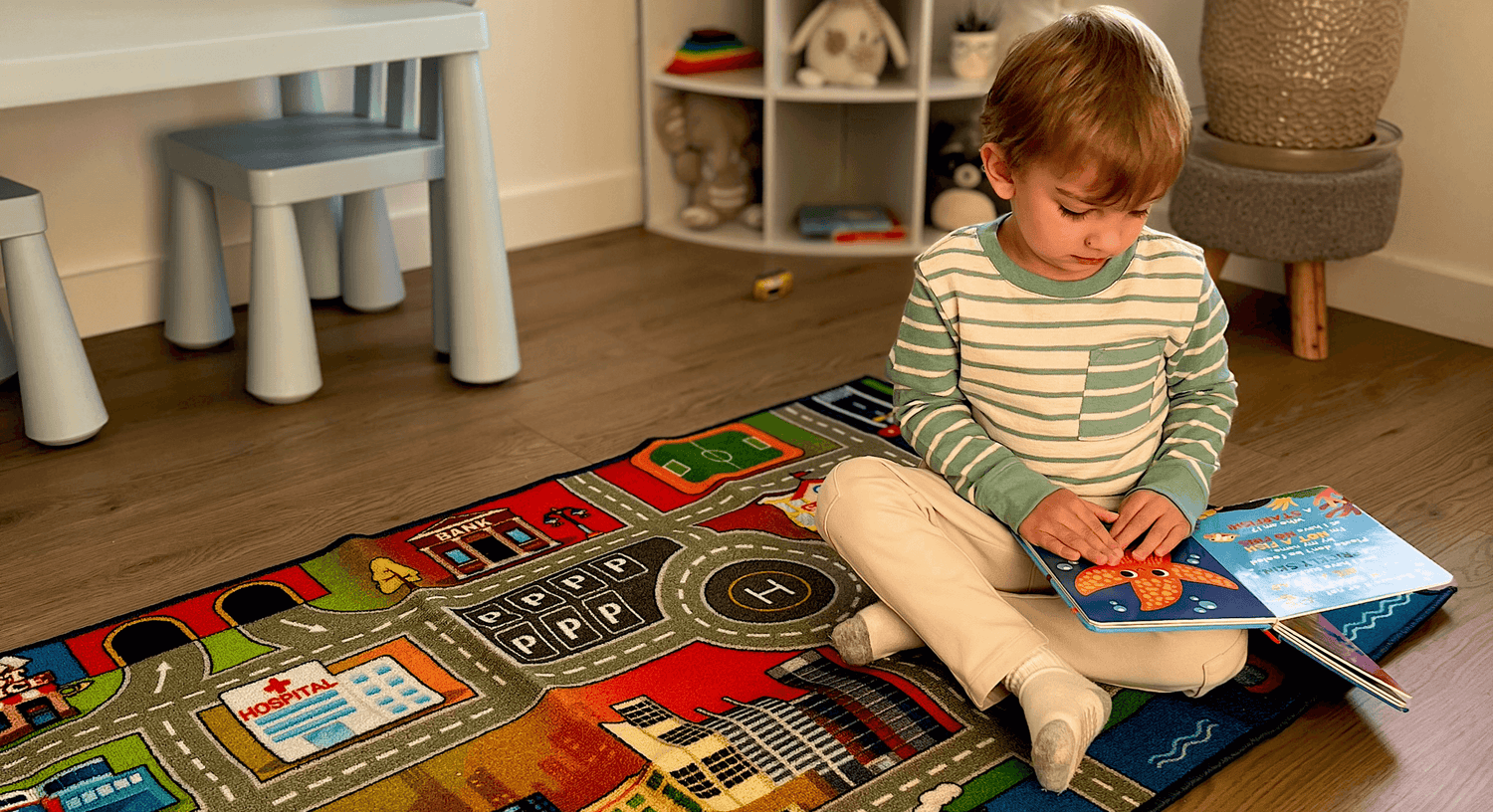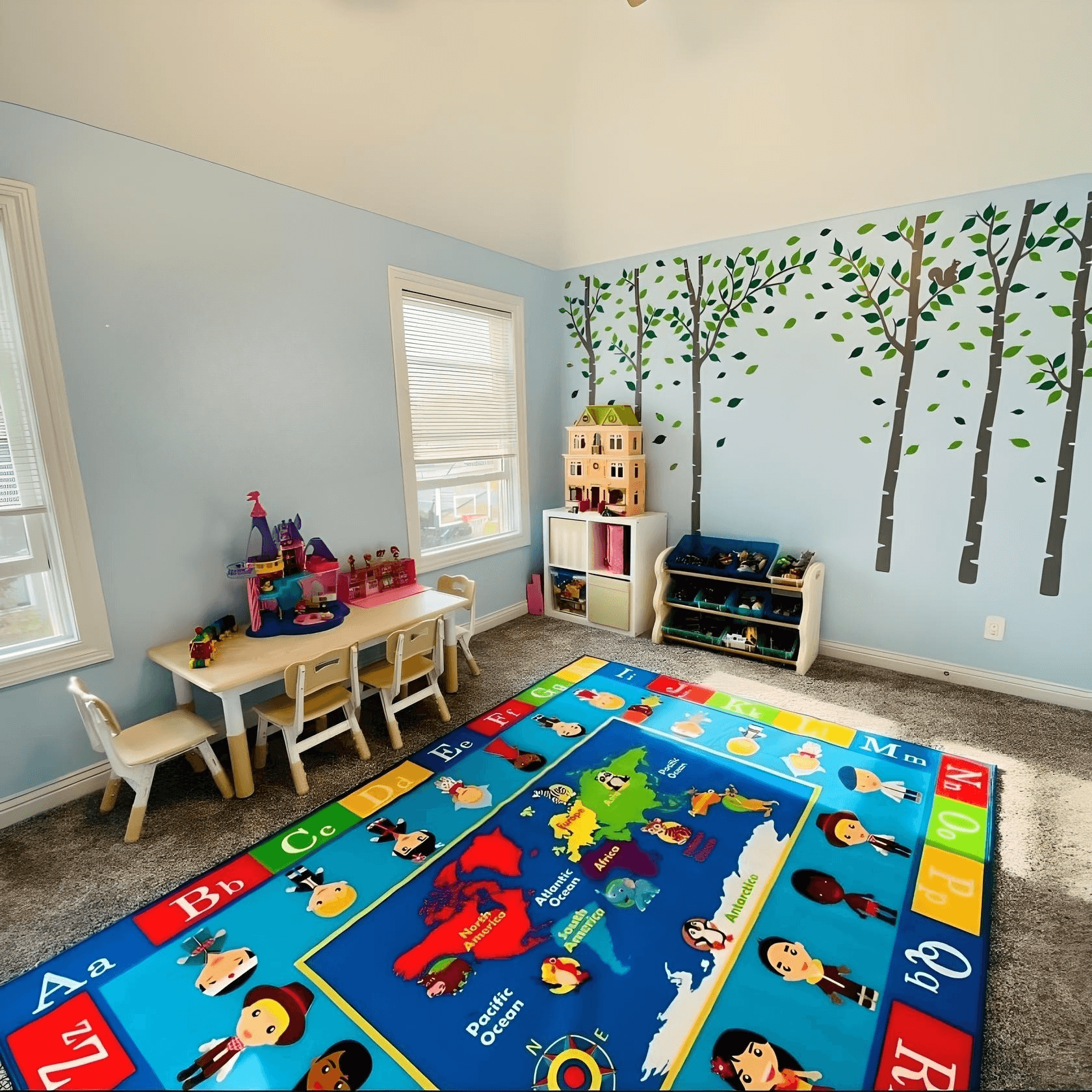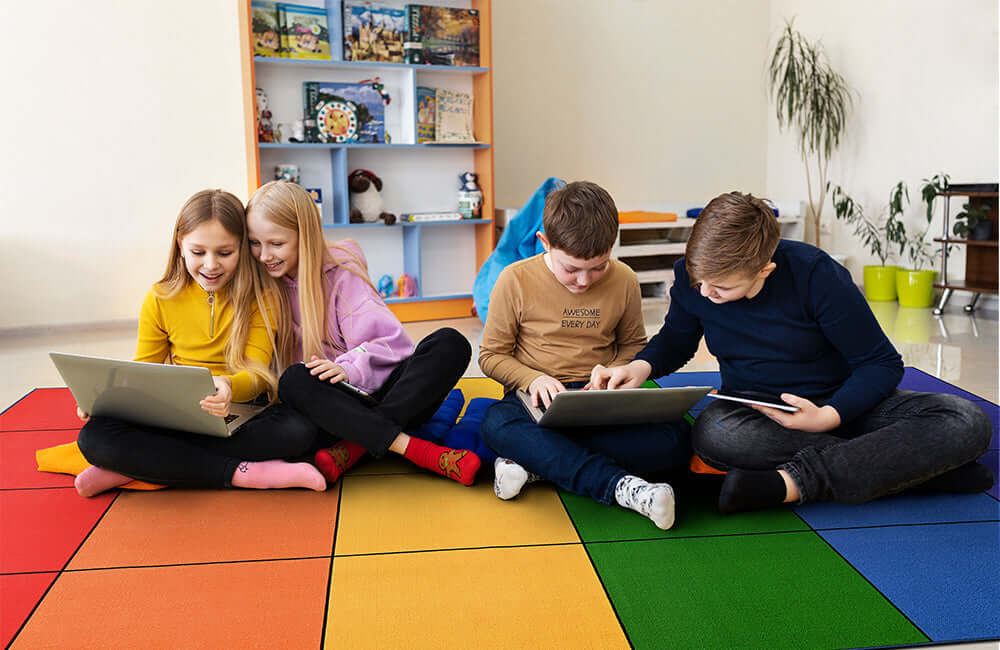As educational approaches evolve and learning spaces diversify beyond traditional classrooms, the need for portable, adaptable learning environments has never been greater. Whether accommodating space limitations, supporting multiple uses of a single area, addressing temporary locations, or creating home learning spaces, portable classroom solutions offer flexibility without compromising educational effectiveness. This comprehensive guide explores practical, innovative approaches to creating high-quality learning environments that can be set up, reconfigured, and packed away as needed, with special attention to flooring solutions that form the foundation of these adaptable spaces.
Portable Flooring Systems: Creating Foundations for Learning
The floor beneath students' feet provides the literal and figurative foundation for learning activities. Portable flooring solutions transform any surface into an appropriate learning space while defining boundaries and creating comfort.
Interlocking Carpet Tile Systems
Modular carpet tiles offer perhaps the most versatile foundation for portable classroom environments:
- Easy transport: Lightweight tiles pack flat in carrying cases
- Quick assembly: Interlocking edges connect without tools or adhesives
- Custom sizing: Create precisely the space needed for specific activities
- Pattern options: Arrange tiles to create learning zones or activity boundaries
- Educational features: Select tiles with alphabet, number, or map features
- Acoustic benefits: Reduce echo and noise in challenging acoustical environments
According to educational environment researchers, defining a consistent learning area with portable flooring helps students mentally transition into "learning mode" even in non-traditional settings.
Roll-Out Carpet Solutions
For larger temporary spaces, roll-out options provide efficient coverage:
- One-piece setup: Quick deployment for larger group activities
- Built-in padding: Enhanced comfort compared to many hard surface floors
- Educational prints: Maps, alphabets, number grids, or game patterns
- Edge treatments: Finished borders prevent tripping hazards
- Stain resistance: Specialized treatments for easy cleaning
- Storage solutions: Storage straps or bags keep rolls organized
Cushioned Mat Systems
Individual mats offer maximum portability for the smallest spaces:
- Personal spaces: Define individual learning positions
- Waterproof options: Suitable for outdoor learning extensions
- Foldable designs: Compact storage in minimal space
- Dual-sided features: Different surfaces for different activities
- Washable materials: Easy maintenance between uses
- Sensory options: Varied textures for sensory-seeking students
According to educational mobility experts, consistent flooring elements help maintain behavioral expectations even when primary learning locations change, providing important continuity for students.
Mobile Furniture Solutions: Flexible Seating and Surfaces
Portable classroom environments require furniture that balances mobility with stability, durability with weight, and function with storage efficiency.
Collapsible Desk Solutions
Contemporary collapsible desks provide stable work surfaces with minimal storage requirements:
- Pop-up designs: Deploy from flat to functional in seconds
- Variable heights: Adjust from floor-based to standing heights
- Group configurations: Connect multiple units for collaborative work
- Lightweight materials: Typically 5-8 pounds for easy transport
- Rigid work surfaces: Support technology and writing activities
- Compact storage: Stack or nest when not in use
Flexible Seating Options
Portable seating must prioritize both comfort and packability:
- Inflatable options: Maximum compression for storage
- Folding designs: Balance support with collapsibility
- Stack-and-carry systems: Optimize transport efficiency
- Multi-purpose pieces: Storage that doubles as seating
- Floor-friendly designs: Avoid damage to underlying surfaces
- Washable covers: Maintain hygiene between settings
Writing Surface Alternatives
When space constraints limit traditional boards, portable alternatives maintain writing functionality:
- Rollable whiteboards: Flexible material stores in tubes
- Tabletop writing films: Transform any surface into a dry-erase board
- Fabric writing surfaces: Special fabrics accepting washable markers
- Repositionable panels: Adhesive-backed writing surfaces
- Window-cling solutions: Turn windows into temporary writing spaces
- Electronic alternatives: Tablet-based annotation systems
Compact Storage Systems: Organizing Learning Materials
Effective portable classrooms require thoughtful storage solutions that balance accessibility with mobility.
Mobile Resource Carts
Purpose-built carts serve as command centers for portable classrooms:
- Subject organization: Divided sections for different content areas
- Height considerations: Appropriate reach for target age groups
- Locking options: Security for valuable resources
- Terrain-appropriate wheels: Match mobility to expected surfaces
- Power integration: Charging stations for technology
- Collapsibility: Options that reduce in size for transport/storage
Portable Cubbies
Individual storage creates personal space connections in temporary settings:
- Stackable designs: Configure to available space
- Lightweight dividers: Create visual privacy between spaces
- Color-coding: Support organizational systems
- Carrying handles: Facilitate easy movement
- Waterproof options: Suitable for outdoor or multi-use settings
- Foldable designs: Collapse when not needed
Activity Packs
Self-contained activity systems maximize efficiency for specific learning experiences:
- Curriculum-aligned: All materials for specific learning objectives
- Single-transport design: Everything moves in one container
- Visual inventories: Quick verification of components
- Replacement systems: Easy restocking of consumables
- Cross-curricular options: Materials serving multiple subject areas
- Technology integration: Physical-digital connection points
Visual Boundary Creators: Defining Learning Spaces
In shared or multi-purpose environments, defining the learning space visually helps maintain focus and appropriate behavior.
Portable Room Dividers
Freestanding dividers transform open areas into defined learning environments:
- Sound-absorbing designs: Acoustic management in open areas
- Display functionality: Bulletin surfaces for learning materials
- Adjustable configurations: Straight lines, circles, or custom shapes
- Lightweight construction: Easy repositioning for different activities
- Nested storage: Efficient space use when not deployed
- Height options: Balance visibility with privacy as needed
Floor-Based Boundary Markers
Simple visual cues establish important behavioral boundaries:
- Border tape systems: Temporarily define activity areas
- Corner markers: Establish boundaries with minimal materials
- Sit spot indicators: Create clear expectations for seating positions
- Flow markers: Establish traffic patterns within the space
- Zone identifiers: Visually separate different activity areas
- Removable options: No residue when removed
Backdrop Systems
Portable backdrops provide visual focus and eliminate distractions:
- Pop-up backgrounds: Create defined visual field
- Green screen options: Support digital integration
- Subject-themed designs: Reinforce learning topics
- Attention-focusing patterns: Direct visual focus
- Acoustic benefits: Absorb sound in reverberant spaces
- Brand integration: School identity in temporary spaces
Technology Integration: Digital Resources in Portable Settings
Modern portable classrooms seamlessly integrate technology to expand learning possibilities without fixed infrastructure.
Self-Contained Digital Hubs
All-in-one solutions provide complete technology integration:
- Projection systems: Battery-powered options for visual sharing
- Wi-Fi hotspots: Create internet connectivity in any location
- Audio reinforcement: Ensure all students can hear instruction
- Device charging: Power management for student technology
- Interactive capabilities: Transform ordinary surfaces into touch interfaces
- Rapid deployment: Set up complete technology in minutes
Portable Interactive Displays
Mobile displays create focal points for digital learning:
- Battery-powered options: Function without access to outlets
- Adjustable heights: Accommodate different learning configurations
- Durability features: Withstand transport and varied environments
- Multi-touch interfaces: Support collaborative interaction
- Screen sharing: Connect with student devices
- Transport cases: Protection during movement
Device Management Systems
Organize and secure technology in mobile environments:
- Mobile device carts: Transport, charge, and secure student devices
- Quick-distribution systems: Efficient device handout and collection
- Sanitization stations: Clean devices between users
- ID tracking: Maintain device accountability
- Battery management: Monitor power levels across devices
- Network administration: Manage connections in varied locations
Multi-Purpose Kits: Ready-to-Deploy Learning Environments
Comprehensive kits combine elements for specific educational scenarios, allowing rapid deployment of complete learning environments.
Small-Group Instruction Kits
Self-contained setups for focused small group work:
- Teacher station: Compact instruction point with necessary resources
- Student positions: Defined spaces for 4-8 students
- Visual aids: Portable display options for content presentation
- Manipulatives: Hands-on learning tools for concept development
- Assessment tools: Materials for checking understanding
- Acoustic management: Tools for creating suitable sound environment
Outdoor Learning Kits
Weather-appropriate solutions for taking learning outside:
- Ground protection: Moisture barriers for seating areas
- Sun/rain options: Appropriate shelter for local conditions
- Nature integration: Tools connecting learning to surroundings
- Wind management: Securing papers and lightweight materials
- Portable seating: Comfortable options for varied terrain
- Field equipment: Subject-specific outdoor learning tools
Home-School Connection Kits
Portable resources that move between school and home environments:
- Transition materials: Resources supporting learning continuity
- Family engagement: Tools for incorporating family in learning
- Space-efficient designs: Function in limited home spaces
- Setup guides: Clear instructions for non-educator adults
- Digital connections: Links to online resources extending learning
- Return systems: Processes for materials returning to school
Implementation Strategies: Maximizing Portable Classroom Success
Strategic implementation ensures portable classroom solutions achieve their full potential for supporting learning.
Teacher Training
Prepare educators to maximize portable environment effectiveness:
- Setup efficiency: Optimize rapid deployment of materials
- Multi-use strategies: Maximize functionality of limited resources
- Transition management: Maintain learning focus during environmental changes
- Storage protocols: Systems ensuring materials remain organized
- Contingency planning: Backup approaches for equipment failures
- Student training: Develop student independence in environment management
Student Routines
Establish clear expectations for different portable configurations:
- Setup participation: Age-appropriate roles in environment creation
- Behavioral indicators: Clear expectations for different arrangements
- Transition signals: Consistent cues for environmental changes
- Care procedures: Student responsibility for materials
- Position consistency: Predictable locations in varied setups
- Independence building: Progressive student management of environment
Customization Approaches
Adapt generic portable solutions to specific educational contexts:
- Visual branding: Incorporate school identity into portable elements
- Content alignment: Tailor resources to current curriculum focus
- Age adjustments: Modify standard solutions for developmental appropriateness
- Special needs accommodation: Adapt for diverse learner requirements
- Cultural relevance: Ensure resources reflect student population
- Progressive implementation: Strategic introduction of elements over time
Conclusion
Portable classroom solutions offer remarkable flexibility for today's diverse learning needs, allowing quality educational environments to exist in previously challenging spaces. By thoughtfully selecting and implementing portable flooring, furniture, storage, boundaries, technology, and complete kits, educators can create consistent, effective learning spaces that adapt to changing requirements without sacrificing instructional quality.
The most successful portable classroom implementations balance comprehensive planning with practical efficiency, creating systems that teachers can quickly deploy without extensive preparation time. When properly implemented, these portable environments provide consistency for students while offering the flexibility modern educational approaches demand.
Whether supplementing traditional classrooms, addressing space limitations, supporting remote learning initiatives, or enabling entirely new educational models, portable classroom solutions with appropriate flooring foundations create possibilities for learning that transcend traditional classroom limitations.




Leave a comment
This site is protected by hCaptcha and the hCaptcha Privacy Policy and Terms of Service apply.